The average Singaporean spends $1,000 per holiday. Here's a smart way to invest that amount

According to a survey conducted by online shopping and discount service website Picodi with 22,000 respondents, Singaporeans are the seventh biggest holiday spenders in the world, spending on average S$1,086 on a holiday.
HOW MUCH MONEY PEOPLE SPEND ON HOLIDAYS
The biggest spenders come from Australia who spends an average of US$1,505 (S$2,050) per holiday per person. Hong Kongers came in second with US$1,021 while travellers from Finland were third with an average expenditure of US$897/pax.
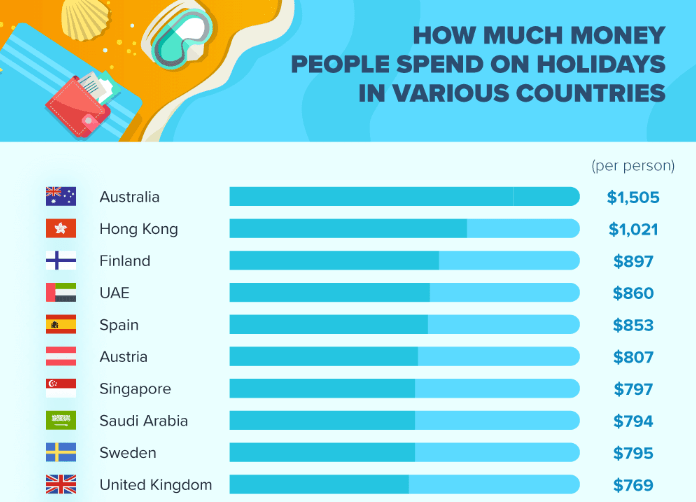
MOST POPULAR TRAVEL DESTINATIONS
Among respondents who preferred to travel abroad (62 per cent of respondents), the most popular holiday destinations were Malaysia, Japan, Thailand, Hong Kong, and Australia.
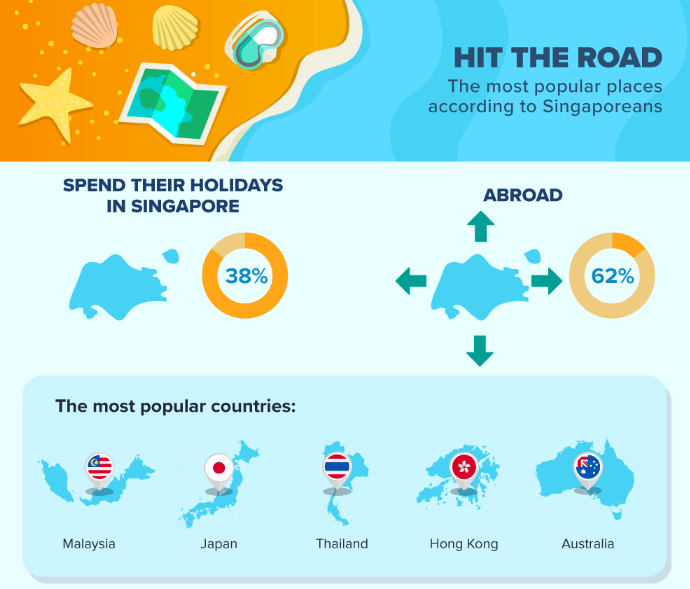
That got us thinking: How can investors invest S$1,000 effectively? We look to explore four ideas in this article.
START YOUR INVESTMENT JOURNEY WITH A ROBO-ADVISOR
I have written a number of articles on investing with Robo-advisors:
The 1.6 per cent opportunity cost dilemma. While not the cheapest form of investment due to management fees incurred, this is probably one of the easiest manners for a newbie investor to get started on his/her investing journey.
With a small monthly investment outlay that doesn't break the bank, a young Singaporean can begin sowing the seeds for a bountiful retirement in 30-40 years' time.
The two key advantages of investing with a Robo-advisor vs. a DIY approach, in my view, are
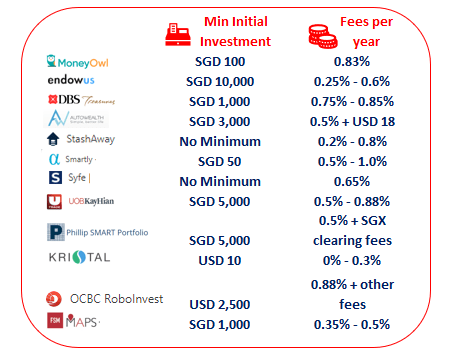
The cost to get started is generally pretty affordable for most Robo-advisors, with some having no minimum initial investment criteria like StashAway and Syfe.
While some Robo-advisors like Endowus has a pretty high minimum initial investment threshold of S$10,000, it is the first Robo-advisor in Singapore to allow Singaporeans to invest using their CPF funds.
Instead of parking your money in CPF OA, generating a guaranteed return of 2.5 per cent/annum, one can invest the funds through Endowus, potentially generating an annualized return of 6-8 per cent over the next 30-40 years.
[[nid:440088]]
Leaving S$100 in your CPF-OA will turn into SGD$210 at the end of 30 years. That same S$100 will translate into S$761 at the end of 30 years if one invests in the capital market generating a net return of 7 per cent/annum.
Of course, investing in the market has its risks where returns are not guaranteed, unlike leaving it in your CPF OA account where the 2.5 per cent/annum returns are almost a surety.
For a young Singaporean with a long horizon to retirement, he/she can be more aggressive when it comes to investing. Setting aside a small sum of S$250/month or S$3,000/year could result in a retirement fund in excess of S$300k (assumed 7 per cent annualized return) at the end of 30 years.
Price for an initial investment through Robo-advisor: S$250
COST-EFFECTIVE INVESTING THROUGH ETFS
If one wishes to minimise his/her investment cost, a DIY approach by investing in ETFs could be a potential solution.
What are ETFs? An ETF, short for exchange-traded fund, is a type of security that involves a collection of securities - such as stocks - that often tracks an underlying index. ETFs are listed on exchanges and ETF shares trade throughout the day, just like an ordinary stock.
In short, buying an ETF counter is like buying a basket of stocks. Instead of the hassle of buying into multiple individual stocks to achieve diversification, one can just buy an ETF to achieve that same result, at an affordable cost for new investors.
The most cost-effective way of investing regularly in ETF is through a Regular Savings Plan, or RSP for short, offered by FSMOne. I have previously written an in-depth article on FSMOne being the cheapest RSP platform in Singapore.
The FSMOne platform provides an investor with the option of investing in 40 local and global ETFs. This is the widest offerings among the local brokerage houses (DBS, POEMS, OCBC) offering RSP options.
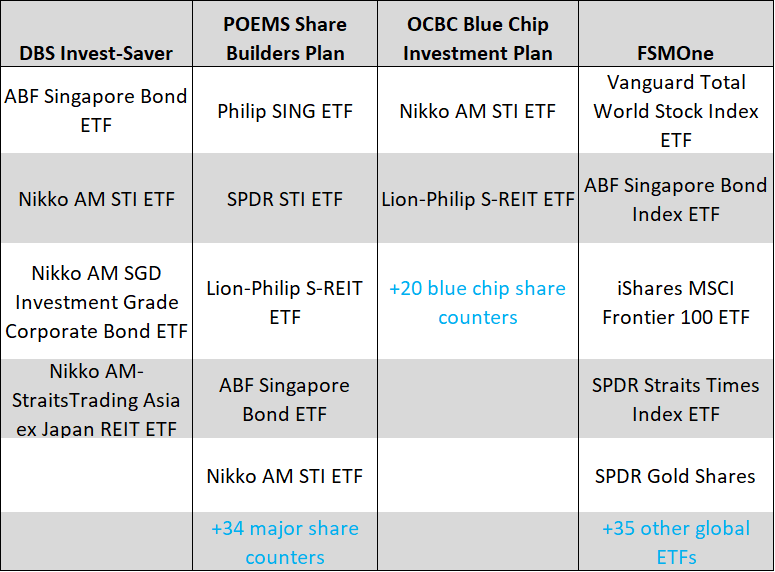
Again, setting aside a sum of S$250 to invest in an ETF like the SPDR Straits Times Index ETF might be a viable option to get exposure to a basket of blue-chip Singapore listed stock.
For investors looking at generating higher income, investing in a REIT ETF like the Nikko AM-Straits Trading Asia ex Japan REIT ETF might also be a viable solution. I have written an article on "Why I am still buying REITs even when they look expensive" with the conclusion that the lower for longer interest rate environment will serve to benefit REITs as an investment asset.
Price for an initial investment through ETF investing: S$250
BUYING AN SG BLUE-CHIP STOCK
Perhaps one will like to buy an SG blue-chip stock with huge upside potential with very little downside risks? Just like the one that Leonardo DiCaprio's character, Jordan Belfort, proposed in the show, The Wolf of Wall Street?
[embed]https://www.youtube.com/watch?v=MJXLV_DMKa0&feature=emb_title[/embed]
I am not here to pull a fast wolf on you. The blue-chip stock that I am proposing does, however, has some similarities to the penny-stock that Leonardo's character recommended in the show.
THE COMPANY THAT SELLS THE "NEXT-GENERATION RADAR/SATELLITE EQUIPMENT"
The company that I am talking about is none other than ST Engineering, a company with an S$12 billion market capitalisation, not a penny-stock in any way.
For those who are unfamiliar with the core businesses of ST Engineering, they are:
The company's satellite business is housed under its Electronics division.
[[nid:264364]]
ST Engineering bought Newtac, a Belgium satellite communication firm, for S$383 million back in March 2019. This was followed by a smaller acquisition of S$20 million for Glolink, another satellite service company in September 2019. The integration of these two businesses might have a short-term negative impact on its Electronics division margins. However, its robust satellite communication services will serve to beef up its global smart city solution offerings in the long-term.
ST Engineering benefits from major tailwinds across all 4 of its key divisions. In its Aerospace division, the recent acquisition of MRAS will allow the company to ride on the tailcoat of A320neo aircraft production. Its Electronics division will benefit from increasing smart city adoption in the region, which is aided by its top-of-the-line satellite communication services. It's Land Systems division will benefit from the gradual adoption of autonomous buses in Singapore. Lastly, it's Marine division, will witness a strong rebound in divisional profitability for 2019 and beyond, backed by a strong order backlog for this division.
ST Engineering has been a consistent payer of dividends over the past 5 years, with DPS payment of S$0.15 per annum. At a DPS of S$0.15, the company spots a respectable dividend yield of 3.75 per cent.
Price for 100 shares in ST Engineering: S$404.
INVESTING IN EDUCATION THROUGH GOOD READS
Investors, like anyone else, need to constantly read to succeed. Warren Buffett is a voracious reader, allegedly devouring up to 500 pages a day.
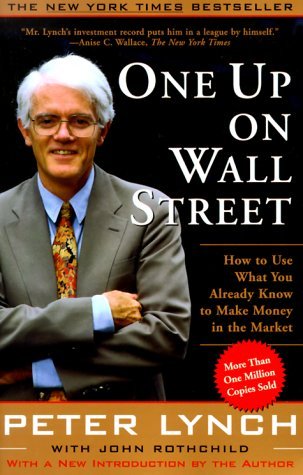
One of my favourite investing classics of all-time is Peter Lynch's One Up on Wall Street. The key takeaway from this book is that one should ignore the ups and downs of the market and focus on the long-term returns to get a handsome reward on your investments. Your long-term should be anywhere between 5 to 15 years.
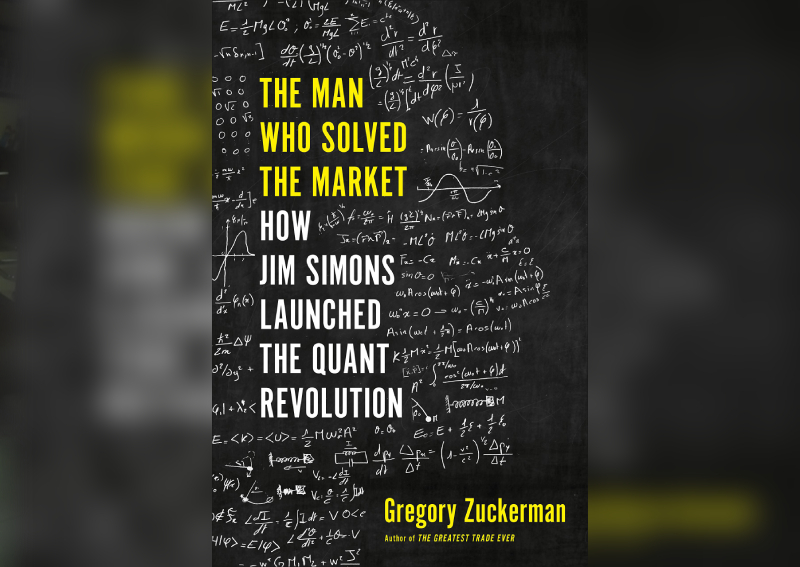
Alternatively, one can look to read the biography of Mr Jims Simons: The Man Who Solved the Market. Mr Jims Simons is probably the most profitable fund manager that you have not heard of. His Medallion Fund achieved a track record that bested Warren Buffett by 200x over the last 30 years.
While it is highly unlikely that you will be able to replicate his success, I am certain that one will benefit immensely just by learning about his thought processes.
Price for both books: S$38.70
That leaves you with about S$57 leftover. Keeping some cash on hand is always a good idea as an investor as well as a traveller to capitalise on opportunities ahead. If the holiday spirit moves you, consider making a donation to your favourite charity.
Let's get ready for X'mas!
This article was first published in New Academy of Finance.